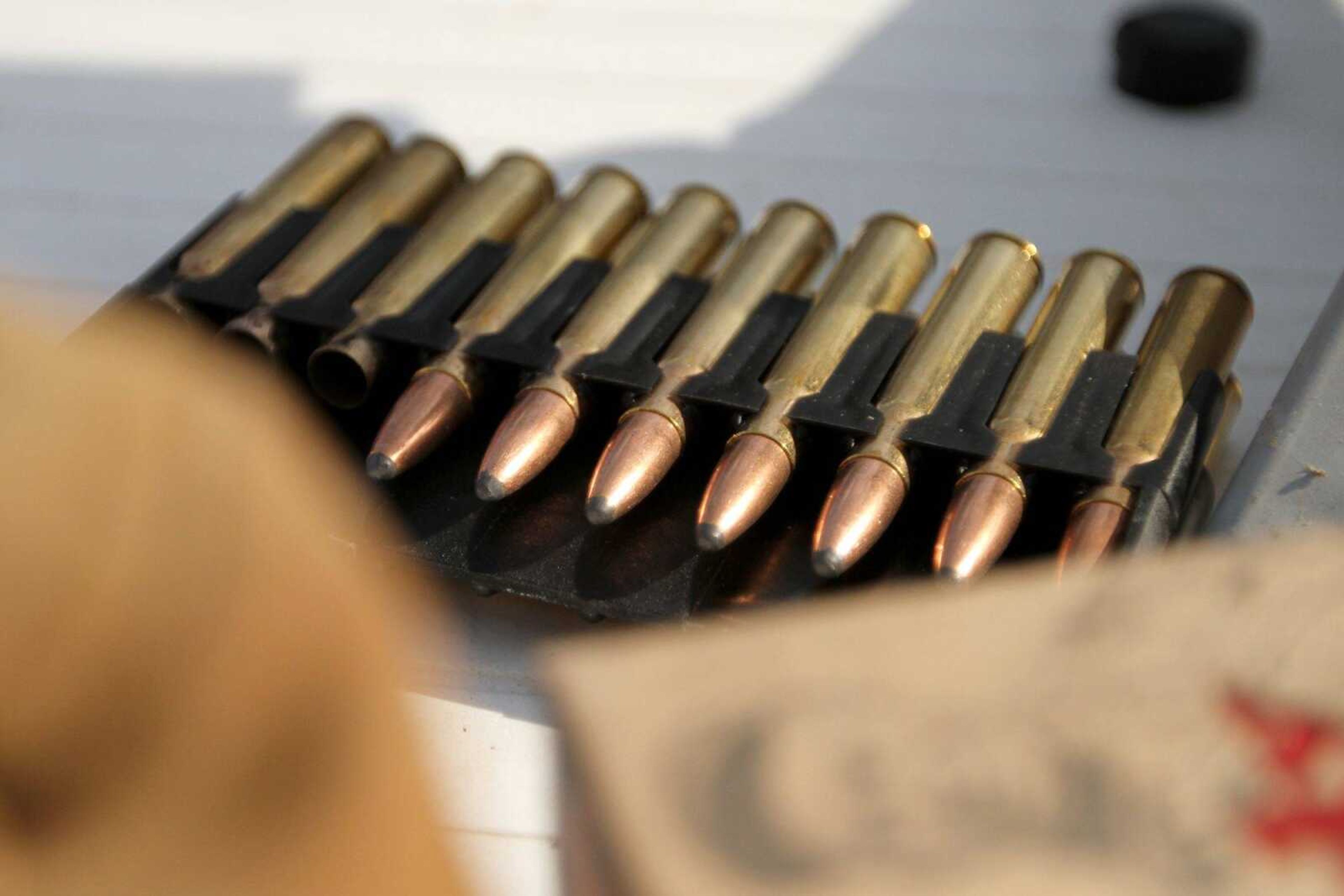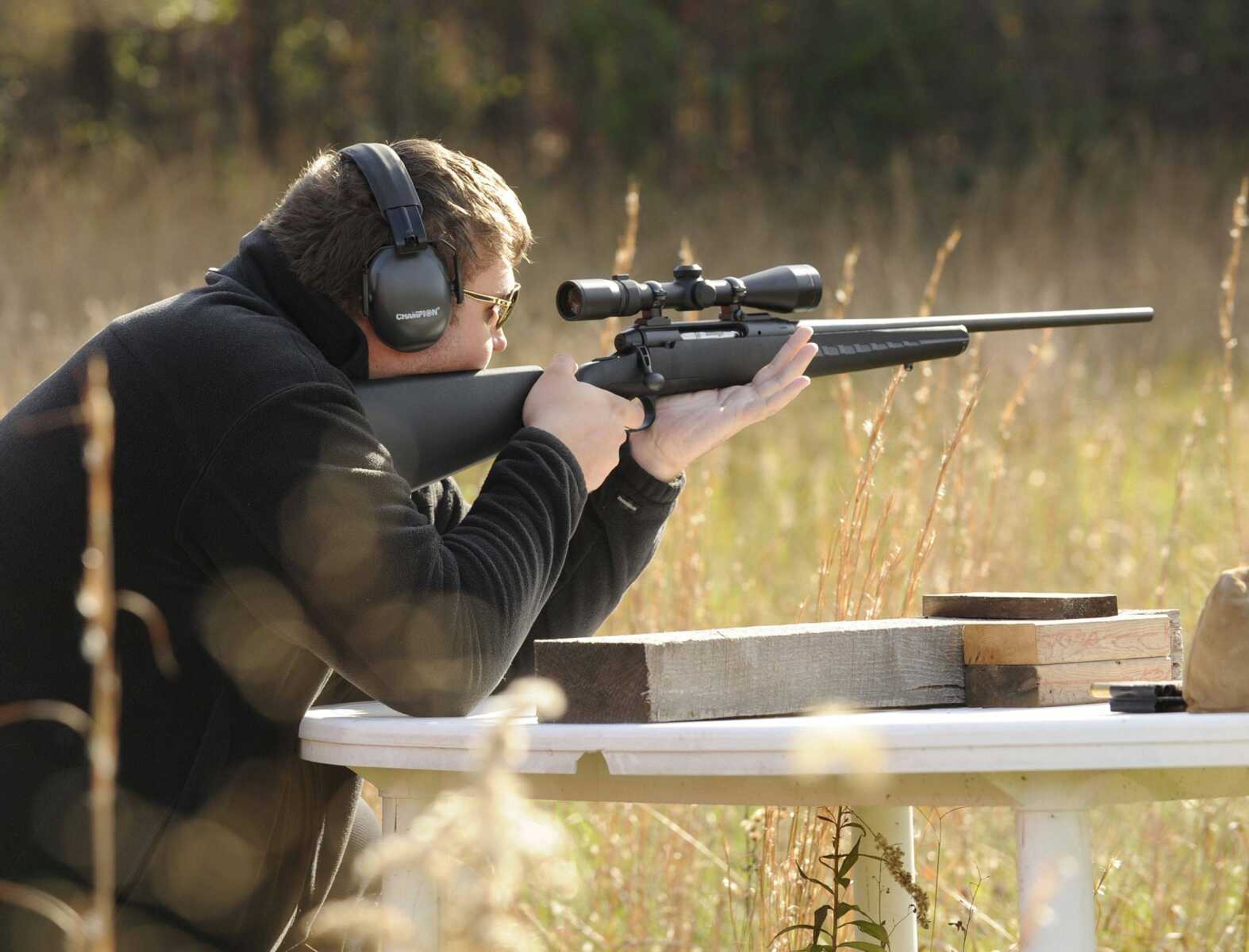It's that time of year again, when the outdoors enthusiasts of Missouri pack up their hunting gear and head to the deer stands in an effort to bag the biggest buck in the woods.
Saturday begins the main portion of firearm season, when 83 percent of deer harvesting takes place, Conservation Department resource scientist Emily Flinn said.
Hunting can be offensive to those who are against killing animals, but in the case of regulating the deer population, hunting is necessary.
Flinn said the most effective way of managing the deer population is through hunting season.
"Deer are a keystone species biologically, plus have social impacts including influences on motorists, production landowners, hunters and even urban residents," she said. "Since managing rural deer populations is dependent on hunting, it subsequently promotes hunting heritage. ... Deer are the No. 1 most commonly hunted species."

Overpopulation can result in starvation and disease in the animals, and it also cause an increase in property damage and motor vehicle accidents.
Although the deer population has decreased in some parts of Missouri, the population has continued to increase in the southeast region.
This doesn't mean hunters can kill in excess; the MDC issues a certain number of permits to hunters each year, and killing more than deer than allowed can result in hefty fines.
Seth Koehler hunts in the Cape Girardeau area each year with his family. To him, keeping the herds regulated is an important part of why he hunts. He said often hunters are painted as being irresponsible or "trophy hunting," but that's not why he and his family participate.
"What a lot of people don't know is that the Department of Conservation was started by hunters to prevent people from moving west too quickly and thinning the populations out," Koehler said. "They got together and did something about it, and now we have a department that does a great job regulating things like hunting seasons and populations."
Cold weather is encroaching, but Flinn said it would take more than a little snow to keep hunters away from opening firearm weekend.
"If there is a very harsh winter through Jan. 15, it will affect harvest trends," Flinn said. "But I don't think undesirable weather will have a big impact on the season, especially the November portion."
Last year in Cape Girardeau, Scott, Bollinger and Perry counties, 5,662 deer were killed by hunters. The highest of these was Bollinger County, which had 2,009. Flinn said the MDC monitors the deer population each year after hunting season. It's tracked through production landowner surveys, hunter surveys, the number of deer harvested, deer population data and local agency perspectives, like those from the Cape Girardeau Conservation Nature Center.
Although this fall has produced a bumper crop for corn and soybeans, the acorn crop is average, which is white-tailed deer's main source of nutrition through the winter. Because of that, Flinn said, she didn't expect this year to be a record-breaker for local hunters.
For deer-hunting enthusiast Jeanie Haertling, bringing home the largest buck isn't what she's focused on, either; she's just happy to be outdoors.
"I just like being outside in nature," Haertling said. "The sights, sounds and smell ... just nature in general. I can't believe it when people sleep in the mornings; I've always been an early riser."
Haertling has been a volunteer at the Cape Girardeau Conservation Nature Center for the past 4 1/2 years. She helps with the archery and outdoor classes as well as visiting surrounding schools.
When Haertling runs into people who disapprove of hunting, she says, "There's nothing better for you."
"When John and I harvest, we eat that animal -- what's better, and what's better for you? There's no preservatives, and wouldn't you rather see [a deer] you harvest being eaten rather than see it on the side of the road?" she said.
This year's youth hunt dropped slightly from last year's, from 18,676 deer harvested to 18,091. However, it was the third-largest hunt in the state since youth season was split into two segments in 2008.
In the past, hunters have been concerned about deer diseases, but Flinn thought that wouldn't be an issue this year. In 2012, epizootic hemorrhagic disease was an epidemic, killing about 10,000 deer in Missouri. Since then, chronic wasting disease has been a concern, but Flinn said cases of it have only been reported in Macon and Linn Counties so far.
Stopping the spread of disease is done through proper carcass disposal, correct meat handling and cooking, Flinn said.
For those who hunt and can't eat what they harvest, there's the Share the Harvest program sponsored by the Conservation Federation of Missouri. Flinn said the Missouri Department of Conservation works in conjunction with the program. Last year, 4,487 hunters donated their harvested deer, which resulted in 227,358 pounds of meat available for people in need.
For more information on Share the Harvest, visit mdc.mo.gov or confedmo.org.
smaue@semissourian.com
388-3644
---
Hunting seasons
Archery: from Sept. 15 to Nov. 14 and from Nov. 26 to Jan. 15
Firearms (main portion): -- from Nov. 15 to Nov. 25
Firearms, alternative methods: from Dec. 20 to Dec. 30
Firearms, antlerless: From Nov. 26 to Dec. 7
Firearms, youth: from Nov. 1 to Nov. 2 and from Jan. 3 to Jan. 4
Comparisons of deer harvests
Number of deer harvested during 2013-2014 season
Cape Girardeau County
Total *-- 1,433
Does *-- 521
Button bucks *-- 140
Antlered bucks *-- 772
Scott County
Total *-- 441
Does *-- 157
Button bucks *-- 39
Antlered bucks *-- 245
Perry County
Total *-- 1,779
Does *-- 767
Button bucks *-- 201
Antlered bucks *-- 811
Bollinger County
Total *-- 2,009
Does *-- 825
Button bucks *-- 261
Antlered bucks - 923
Numbers so far in 2014-2015 season
Cape Girardeau County
Total *-- 616
Does *-- 284
Button bucks *-- 70
Antlered bucks *-- 262
Scott County
Total *-- 147
Does *-- 64
Button bucks *-- 10
Antlered bucks *-- 73
Perry County
Total *-- 487
Does *-- 232
Button bucks *-- 56
Antlered bucks *-- 199
Bollinger County
Total *-- 874
Does *-- 382
Button bucks *-- 121
Antlered bucks - 371
Connect with the Southeast Missourian Newsroom:
For corrections to this story or other insights for the editor, click here. To submit a letter to the editor, click here. To learn about the Southeast Missourian’s AI Policy, click here.







